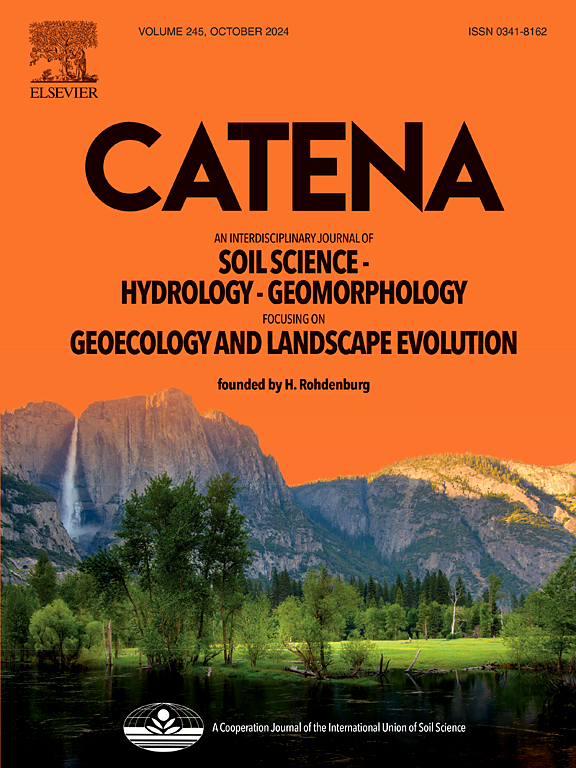Combination of MIR spectroscopy and environmental covariates to predict soil organic carbon in a semi-arid region
Sabetizade, Marmar , Gorji, Manouchehr , Roudier, Pierre , Zolfaghari, Ali Asghar , Keshavarzi, Ali
2021-01-01 null null 196(卷), null(期), (null页)
Soil organic carbon (SOC) sequestration provides an opportunity to mitigate climate change impacts, since soils are the largest store of terrestrial carbon. Accurate estimates of SOC content across landscapes are therefore important to monitor and manage efficiently these SOC stocks. Mid-infrared (MIR) spectroscopy has been increasingly applied as a rapid, cost-effective, and accurate method for predictive soil analysis. This study assessed the performance of MIR spectroscopy for SOC prediction at a regional scale for remote landscapes in Iran. The potential for combining environmental covariates, including remotely sensed covariates and terrain attributes, with MIR variables to improve prediction was also tested. Soil samples were collected from 151 locations at two depths (0-5 and 5-15 cm) across a large study area (350 km(2)) and analysed for gravimetric SOC content. Partial least squares regression (PLSR) was used to model SOC from MIR spectra recorded on the samples and to obtain latent variables (LV) that were then used, either on their own or alongside environmental covariates, as input to a Cubist rule-based model. The Cubist model using the LV alone outperformed the PLSR model and produced a high prediction accuracy with an R-2 of 0.96, RPIQ of 5.61, and RMSE of 0.16% on the validation set. The inclusion of environmental covariates alongside LV did not improve the performance of the model compared with the model on LV alone (R-2 = 0.94, RPIQ = 4.81, RMSE = 0.19%). The high performance of the developed models indicates the high potential of MIR spectroscopy for SOC prediction in data-scarce areas.
相关推荐
- Enhancing flash flood susceptibility modeling in arid regions: integrating digital soil mapping and machine learning algorithms [2021-01-01]
- Spatial prediction of soil micronutrients using machine learning algorithms integrated with multiple digital covariates [2021-01-01]
- Deep Insight on Land Use/Land Cover Geospatial Assessment through Internet-Based Validation Tool in Upper Karkheh River Basin (KRB), South-West Iran [2021-01-01]
- Predictive Mapping of Electrical Conductivity and Assessment of Soil Salinity in a Western Turkiye Alluvial Plain [2021-01-01]
- Digital mapping of soil texture classes for efficient land management in the Piedmont plain of Iran [2021-01-01]



